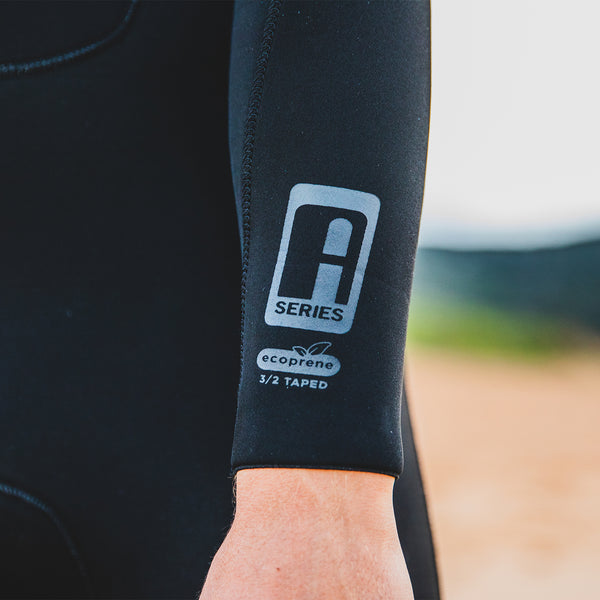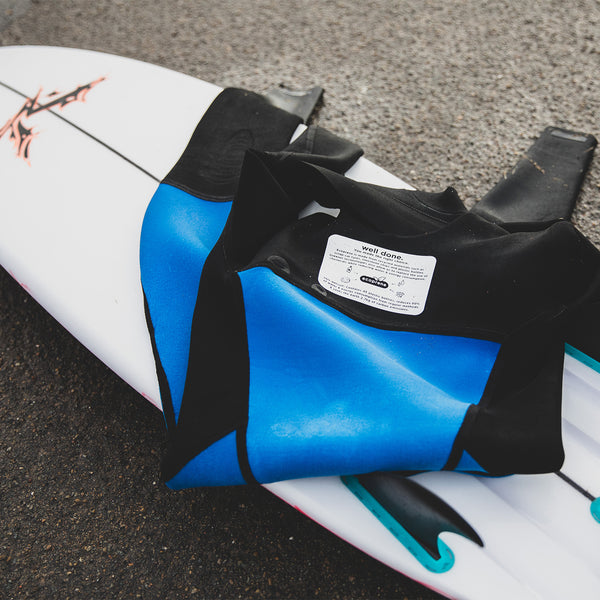How to Choose a Wetsuit: Wetsuit Size Guide

A wetsuit is meant to keep you warm right? Yes. But is that all it’s meant to do? No. As a surfer, there are many different functions and features we expect of a wetsuit. As a surf brand, we feel like it’s our job to help you understand those things BEFORE you buy your next, or maybe your first wetsuit. Thickness, size, even the material all plays into the performance of a wetsuit.
We’ve created this handy wetsuit size guide to help you choose the right one. You’re welcome!
How Should a Wetsuit fit?
A wetsuit when put on dry, should extend just past your wrist bone and just past your ankle. Wetsuits will adjust and ride up as you move around in the water so if it’s sitting behind your wrist bone or before your ankle when it is dry, it is probably too small. A wetsuit should feel tight on your skin, but not to the point where it heavily restricts your movement or puts pressure on your joints. If there are any rolls or loose pockets anywhere on the torso, it is most likely too big.
Wetsuit size guides are available on our website, as wetsuit sizing does not correlate to clothing sizes. Each size from S to XL, has a different height component. For example, if you are a medium in width but are a taller medium (a growing teenager) you would be a medium tall (MT).
Check out our wetsuit size guides here.

Wetsuit Thickness Guide
Due to the 100% limestone-based ecoprene material, Rusty wetsuits take a few surfs for the rubber to stretch and adjust, so give them at least 3 or 4 surfs before you deem them too small. Follow the first steps and you won’t have that problem anyway.
Your wetsuit thickness solely has to do with where you live. The 3/2 mm steamer is probably the most common wetsuit in Australia. 3 being 3 millimetres on the torso and 2 being 2 millimetres on the arms and legs. On the West Coast, a 3/2 will do the job year-round, but if you were to have a 4/3 in winter and a 2/2 in summer that would be favourable. Lots of surfers resort to the ‘springsuit’ in the warmer months, which could be short arms, short legs, or both. Spring suits will usually be 2/2 thickness. It is important to note that with extra wetsuit thickness comes restricted mobility. The more rubber you have around you, the harder it is going to be to move, hence why going above 3/2 millimetres is only done when absolutely necessary.

Wetsuit Temperature Guide
18 to 24 degrees Celsius would be considered warmer wetsuit weather, hence our 2/2 short arm wetsuit would be suitable for this temp. Anything under 20 degrees most surfers would start wearing their full body 3/2 steamer, which would be our A Series Ecoprene 3/2 CZ LS Steamer Wetsuit, down to about 14 degrees Celsius.
The inside of our wetsuits features full body thermal lining for extra heat insulation, meaning it heats and dries fast, a great combo for a wetsuit.
When we started making wetsuits, we wanted to design the best-performing wetsuit that is also the best performing for the environment. Ecoprene is what we came out with, a 100% limestone-based material that is light, comfy, strong and unparalleled in warmth while maintaining the highest performance in flexibility.
 See our selection of high-quality men’s eco wetsuits, as well as our range of colourful women’s summer and winter suits.
See our selection of high-quality men’s eco wetsuits, as well as our range of colourful women’s summer and winter suits. 








